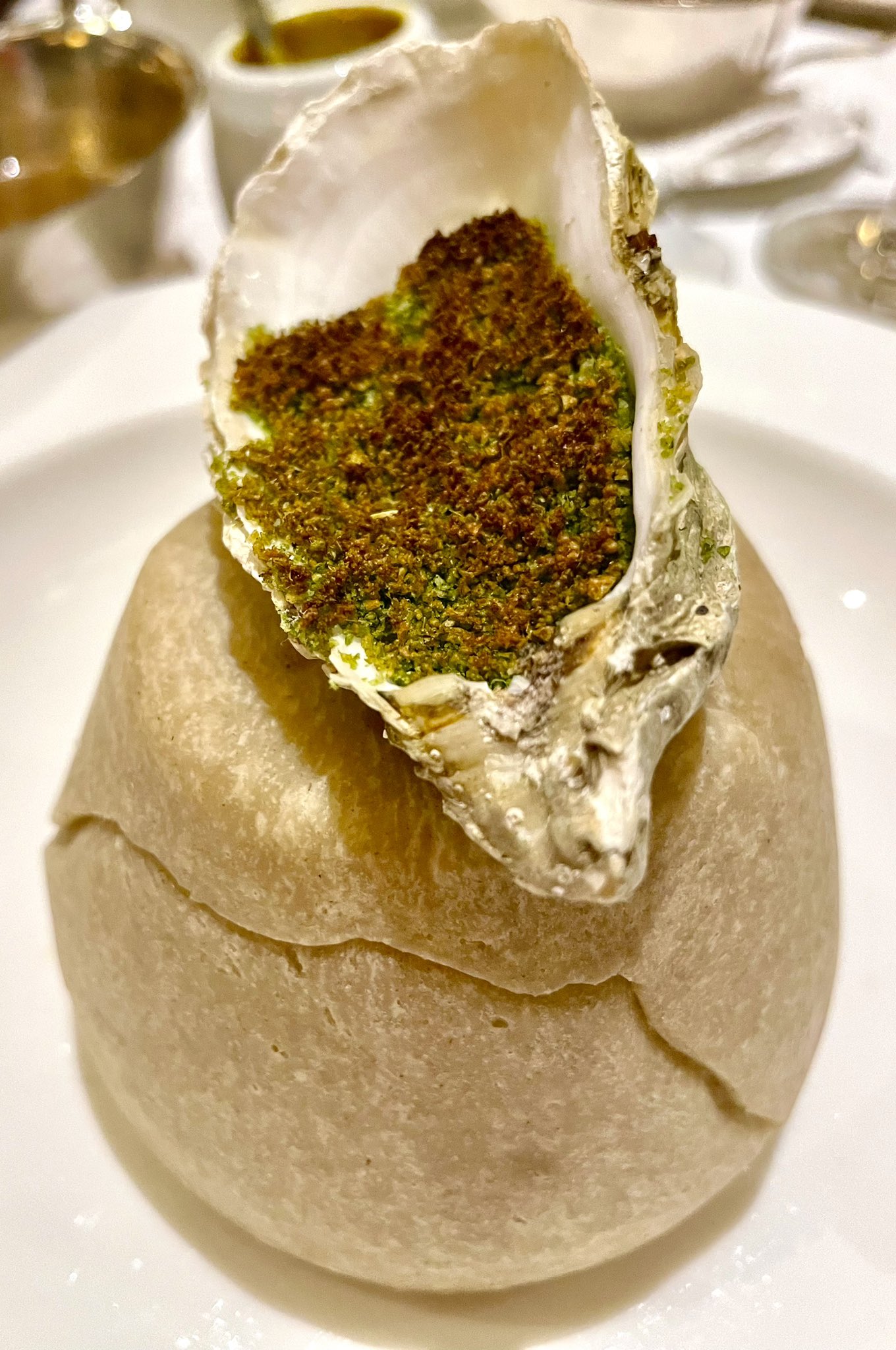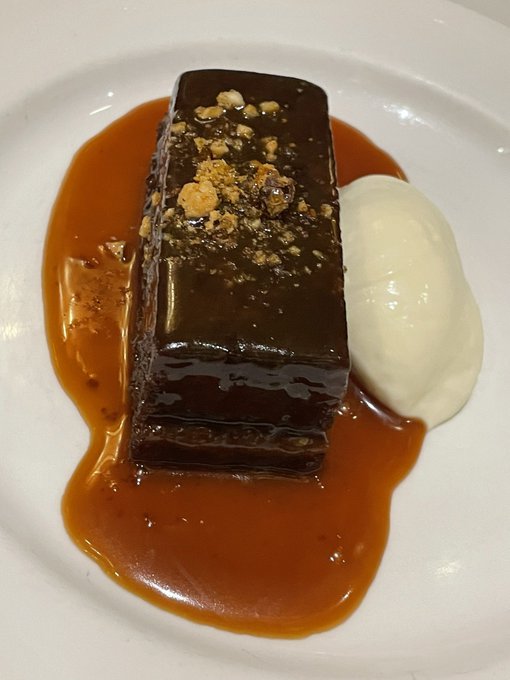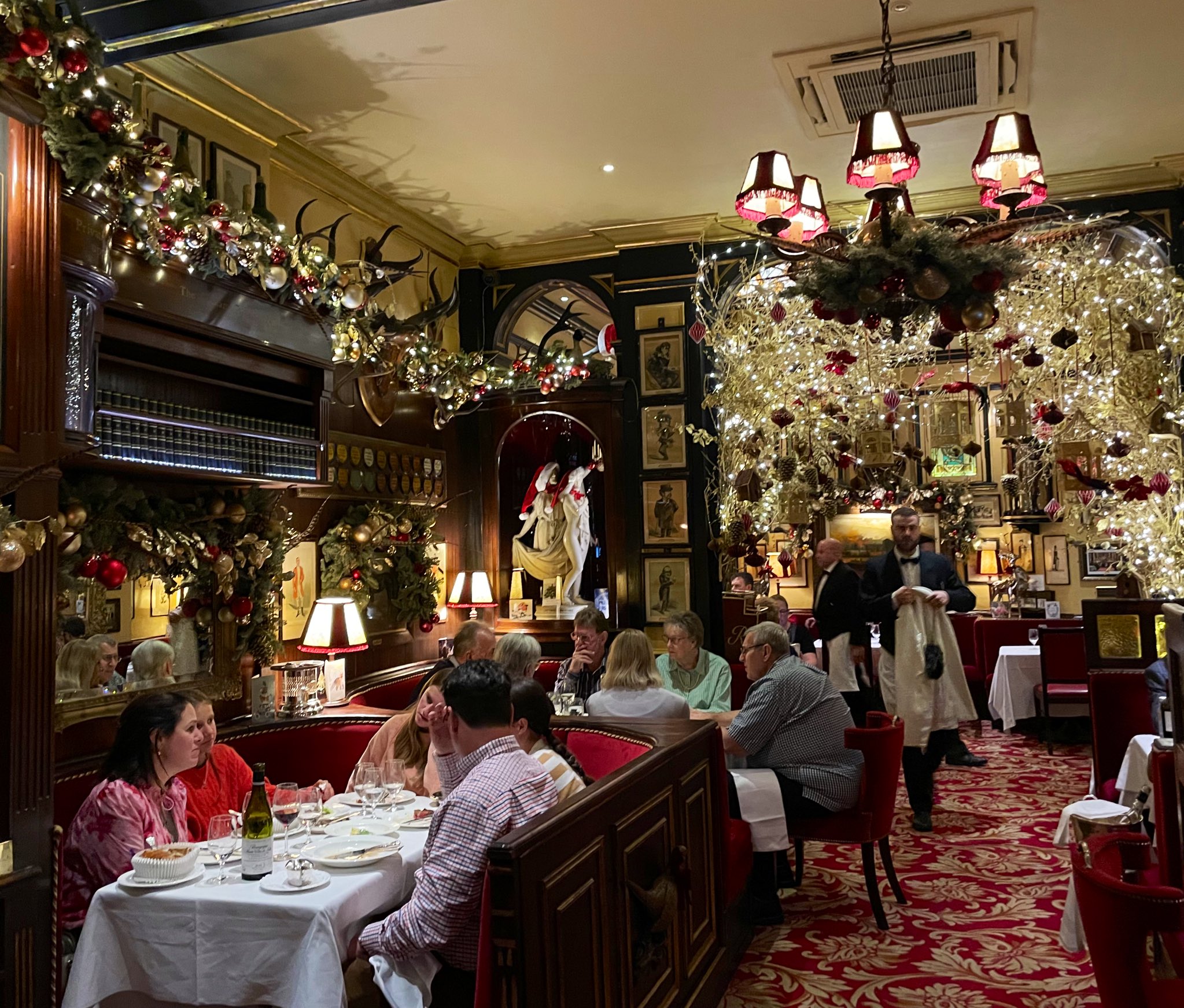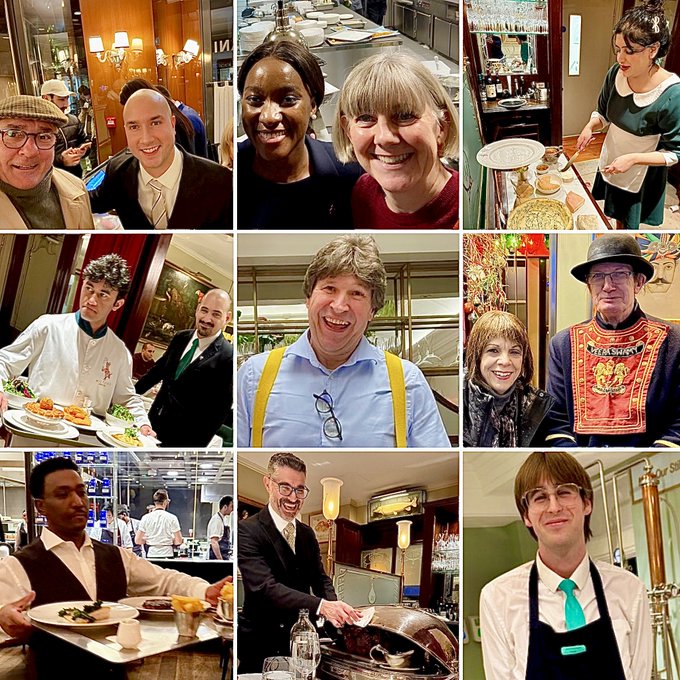
The food in London is getting better, the British are always declaring. “Yeah,” a cynical friend texted us as we boarded our non-stop to Heathrow, “but people have been saying that for thirty years.”
Both statements are true. Londoners haven’t been hidebound by pub grub, bad mutton and boiled beef since the Seventies, but no one will ever mistake its culinary scene for Paris, Tokyo or New York’s. But progress can be tasted all over town, as two generations of ambitious chefs have succeeded in creating a gastronomic identity for the country — one based on the bounty of local produce and the melting pot of cultures visible on every corner. The city is now a world capital as much as a British one, with gustatory delights available from every far flung corner of the globe.
But this trip wasn’t about hidden gems, updated Indian (Gymkhana, BiBi, Ambassadors Clubhouse), Uyghur eats, or Senegalese soups. We were here to sight-see, shop, and nosh in the toniest part of town (Mayfair) and show a London newbie (my big sis) how the British upper crust breaks their bread. For this I got some good-natured ribbing from London scribe/pen-pal Marina O’Loughlin who thinks about Mayfair the way I do the Las Vegas Strip (lots of money, little imagination) and is right to implore me to explore the cutting-edge culinary corners of the “new” London. Maybe next time.
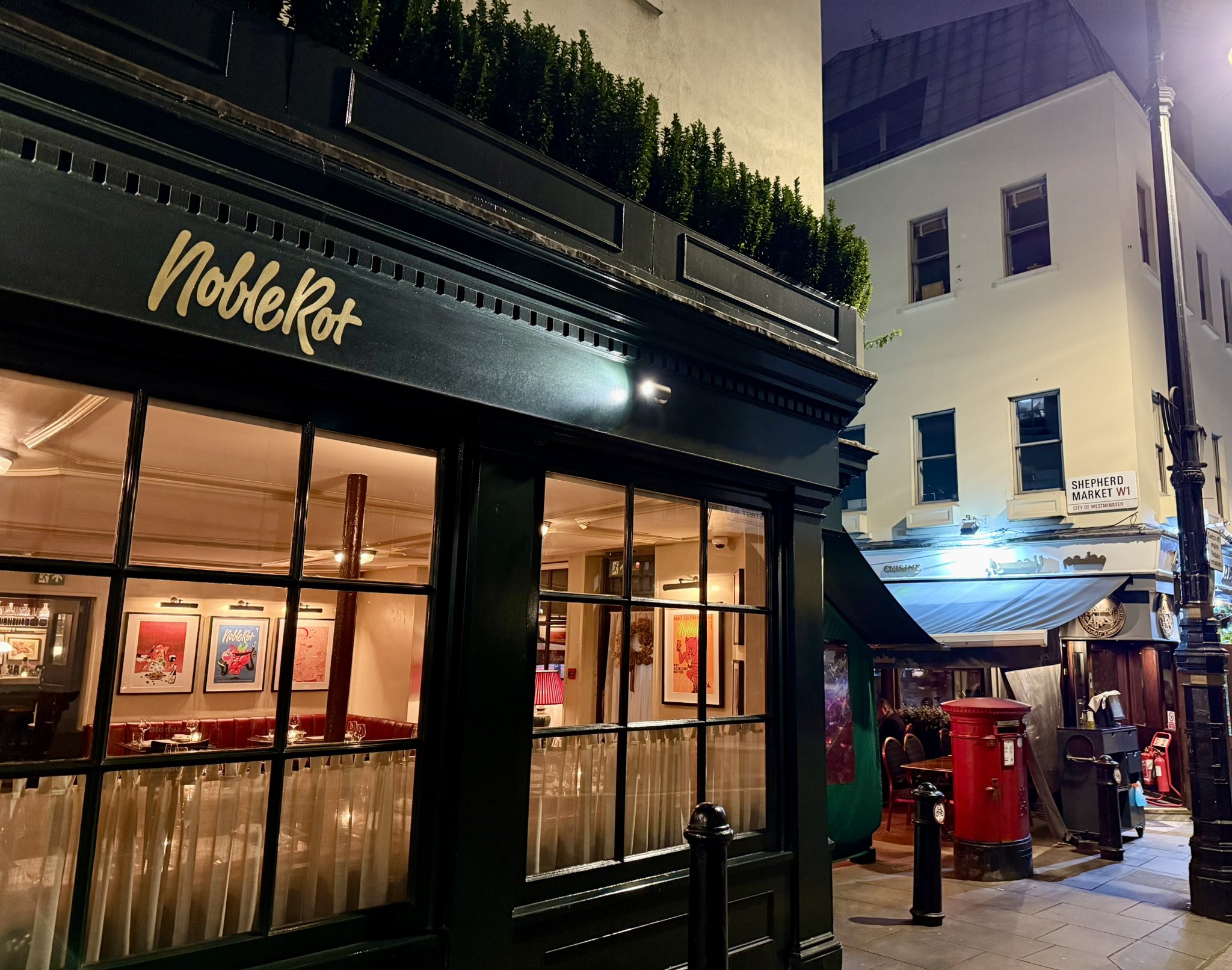
We did take her advice for our first meal of the trip, however, heading straight from Heathrow to Shepard Market, for a cozy, jet-lagged dinner at Noble Rot. Fighting through the London fog of our sleep-deprived brains, we were warmed by an extraordinary bread basket, Parmesan snow-capped gougères, rib-sticking boudin noir with pickled quince, and a wedge of Cornish brill (Dover sole’s heftier cousin) napped in a soothing cream sauce speckled with smoked caviar. Desserts are suitably British (straight-from-the-oven apple cake), Italian-inspired (buttermilk panna cotta), and French perfected (chocolate choux bun/cream puff stuffed with brandied prune and hazelnut sauce). The place is basically an English spin on Parisian bistronomy — combining a laid-back vibe with serious cooking, aimed at a knowledgeable clientele eager to see what the chef is up to, and the service was as warm as that apple cake.
In keeping with the name, the wine list was an oenophile’s wet dream — compelling by-the-glass selections; page after page of producers both famous and obscure; and prices for every budget — all of it a far cry from the wine gouging we put up with in America.
After our gastropub English-French fusion, we were eager to go old school, something which hearkened back to the days of the British Raj. While my family concentrated on taking Harrod’s. Selfridge’s, and Fortnum by storm, I dreamt of garlic naan, butter chicken, and Malabar fish curry. London is justifiably famous for its Indian food (at all price points) and we wanted a taste of the granddaddy of them all: Veeraswamy — a bastion of sub-continent cooking since 1926. Located on s second floor overlooking tony Regent Street, it is colorful, elegant, and formal — the sort of Indian restaurant that does not exist on this side of the pond.
The refinement this cuisine achieves in England is also surprising to those of us raised on indifferent tandoori, perfunctory service, and steam-tabled stews so crusted over they should be labeled with an expiration date. Here, the food is as brilliant and vivid as the colors of the room, and it envelopes your palate with sensations both delicate and intense –everything being very, but not excessively, rich. No mean feat that.

You begin with papadum crisps so light they practically float off the table. With them are three chutneys of varying frutiness and heat, each a bracing palate-awakener. From there it’s all uncharted territory: tucking into exotica like Baghare Baingan (stewed eggplant curry), Grandma’s Spicy Egg Roast (served on a disc rice flour noodles, above), and beetroot croquettes with Stilton and green chili (below) — each dish as far a cry from the leaden, underspiced spicy food you might associate with this cuisine.

This striking dissimilarity continued through the main courses. Butter chicken (murgh makhani) of astonishing amplitude, halibut in a Malabar coconut curry that respected the fish, and paneer tikka (roasted cubes of fresh cheese) which made you miss meat not at all.
Libations are as upscale as the surroundings Wines are well-matched to the food (this food creates thirst), and we zeroed in on a complex, off-dry German Riesling at 82 pounds/$90). Cocktails are surprisingly au courant for such a classic place.
The trouble with dining at Veeraswamy is it spoils you for a level of extravagance, ingenuity, and sumptuousness that is almost impossible to find in Indian restaurants over here. She may be pushing 100, but from where we were sitting (at the best table in the house overlooking Regent Street) there is plenty of life in the old girl yet.
If there is one chef who embodies Britain’s gastronomic revolution, it would have to be the molecularly-obsessed Heston Blumenthal, whose Fat Duck in Bray has been the most famous restaurant in the country for most of this century. Not having the time or inclination to trek out of town for “bacon and egg ice cream”, instead we parked ourselves at a large round table at Dinner by Heston Blumenthal in the beyond-posh Mandarin Oriental Hotel to sample his avant-garde spin on traditional British dishes.
One of the appeals of the place (besides his reputation, the gorgeous setting, inventive cooking, and spotless service) is the flexibility of ordering either a tasting menu or a la carte, depending on your level of interest or peckishness. Another pleasant surprise was letting you choose the degree of intensive care service you desire: three cards are offered for you to peruse and place one in the center of your table — one asking for full explanations of the Blumenthal oeuvre with every dish, a middle option allows for identifying the dish and little else as it hits the table, and a third requesting nothing but “here’s the plate and fare thee well” with every course. We put on our fanboy hat and asked for the Full Monty, and the staff indulged us with descriptions both pithy and informative, never taking more than a minute to describe the story behind every recipe.

The cards are necessary because the entire historical catechism of British cookery is what informs this menu. Rather than modernizing old recipes, though, it’s more like Blumenthal uses them for inspiration to riff on the ingredients. Thus do you get Heston’s famous “meatfruit” (circa 1500) — a foie gras/liver parfait (encased in what looks like half a mandarin orange):

Not to be stickler for details, but one doubts that the kitchens of Henry VII were having their agar-agar way with tangerine jelly.
The same could be said for “The Truffle” (a ping-pong ball of melanosporum butter disguised as a tuber) which also claims an ancient birthright (c. 1500) on the menu . Regardless of genealogy, the results of both are so rich they should come with a tax return.

Main courses were lighter: a caramelized, roasted cauliflower with shiitake dressing, sea bass with a green sauce spiked with eucalyptus, and spiced squab, no doubt much less putrid than the “hung” fowl of the 19th Century, but seasoned and sauced in a way Anthony Trollope might recognize.
We ended with a “Tipsy Cake” (a sugar-crusted sweet brioche, c. 1858), but I’m guessing the French claim it for a lot longer), and a platter of English cheeses at their peak, and left with the opinion that this kitchen, fourteen years on, hasn’t lost its fastball. You certainly don’t go to a Heston Blumenthal restaurant looking for bargains, but $1,000/4 US (about a third of that wine) for a dinner this inventive, precise, and polished, was a deal by American standards. The next time we’re in London, we can’t wait to see what edible historical artifact he is re-configuring next.
If HB asks us to indulge his culinary flights of fancy, Saint Jacques, in the heart of St. James, just steps from Berry Bros. & Rudd, requests nothing of its clientele other than a taste for well-rendered standards of la cuisine Française. Our meal tread no new ground, but a Beaufort cheese soufflé, veal kidneys in mustard sauce, an onglet frites of uncommon mineral-rich depth, and textbook creme brûlée were just what we needed to fortify ourselves for an afternoon of sightseeing in freezing weather. In keeping with the theme of the trip, the greeting and service couldn’t have been more cordial, even though we popped in without a reservation.
A similar fate awaited us a few nights later at Scott’s. We arrived just as they opened, asked nicely, and were seated promptly. (Travel tip: if you don’t have a reservation go early, real early, as in, right-when-they-swing-the-door-open early. You’ll be surprised how often it works, except in hot new restaurants or rarefied-air gastronomic temples.) Scott’s is iconic for it’s seafood (since 1851), and we dove right into a dozen of the freshest oysters imaginable (served oddly with thumb-sized, chorizo-like sausage links), a shellfish bisque that tasted like an entire crustacean compressed into a bowl, and flawless fillets of seared sea bass and pan-fried Dover sole. Welsh rarebit (aka Welsh rabbit) — basically cheese toast with a higher education (below) — and piping hot madeleines completed things, and by the time we left, the restaurant was as full as we were.
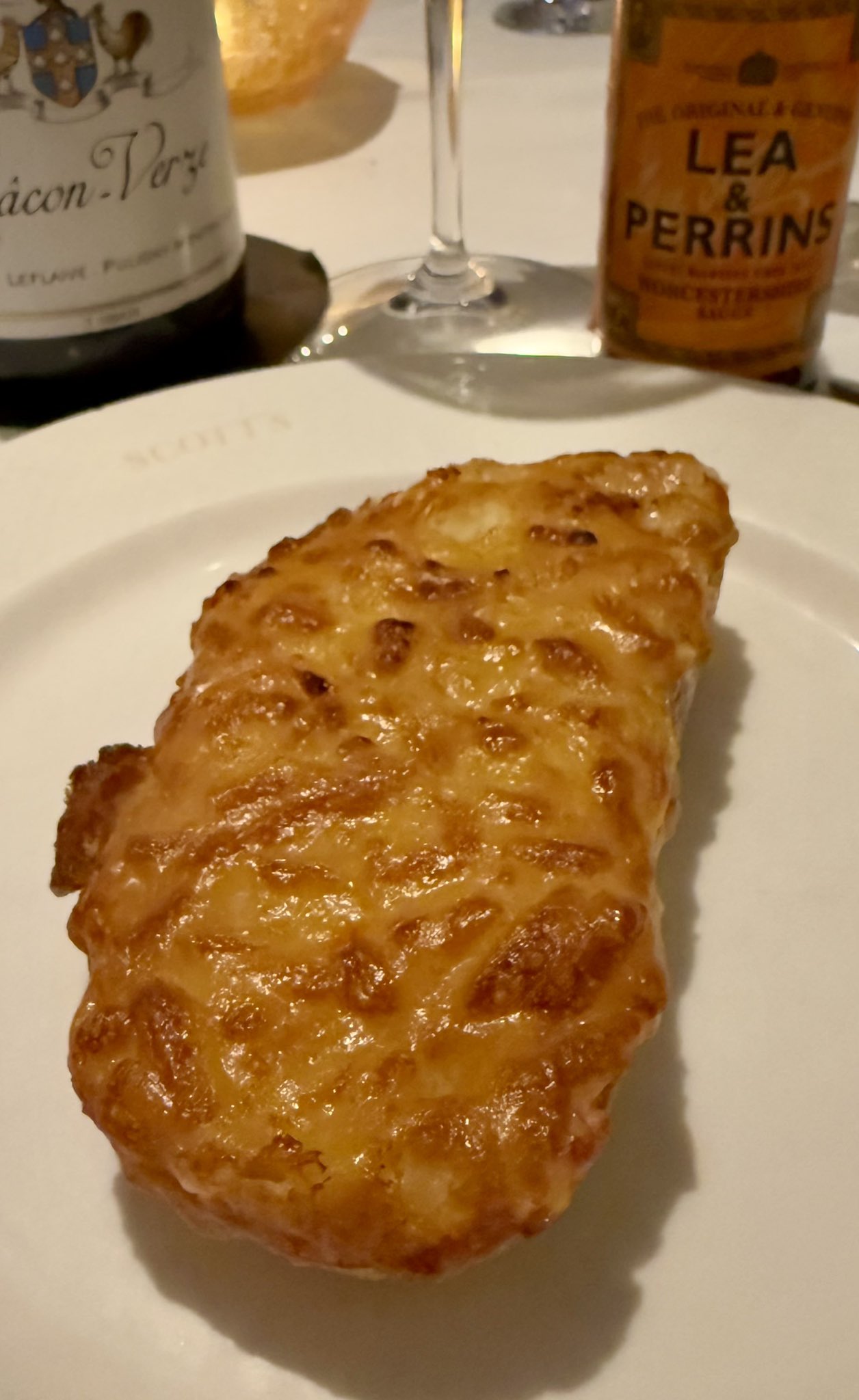
Despite the naysayers, there is much to recommend in gastronomic London. The seafood is nonpareil, chefs take great pride in their local ingredients, and the cooking palette has expanded to include ideas and techniques from all over Europe. New school or old, the typical British reserve seems to have melted over the years, and the place is now so friendly, sometimes you’ll think you’re in Italy.
Take us home, Warren:



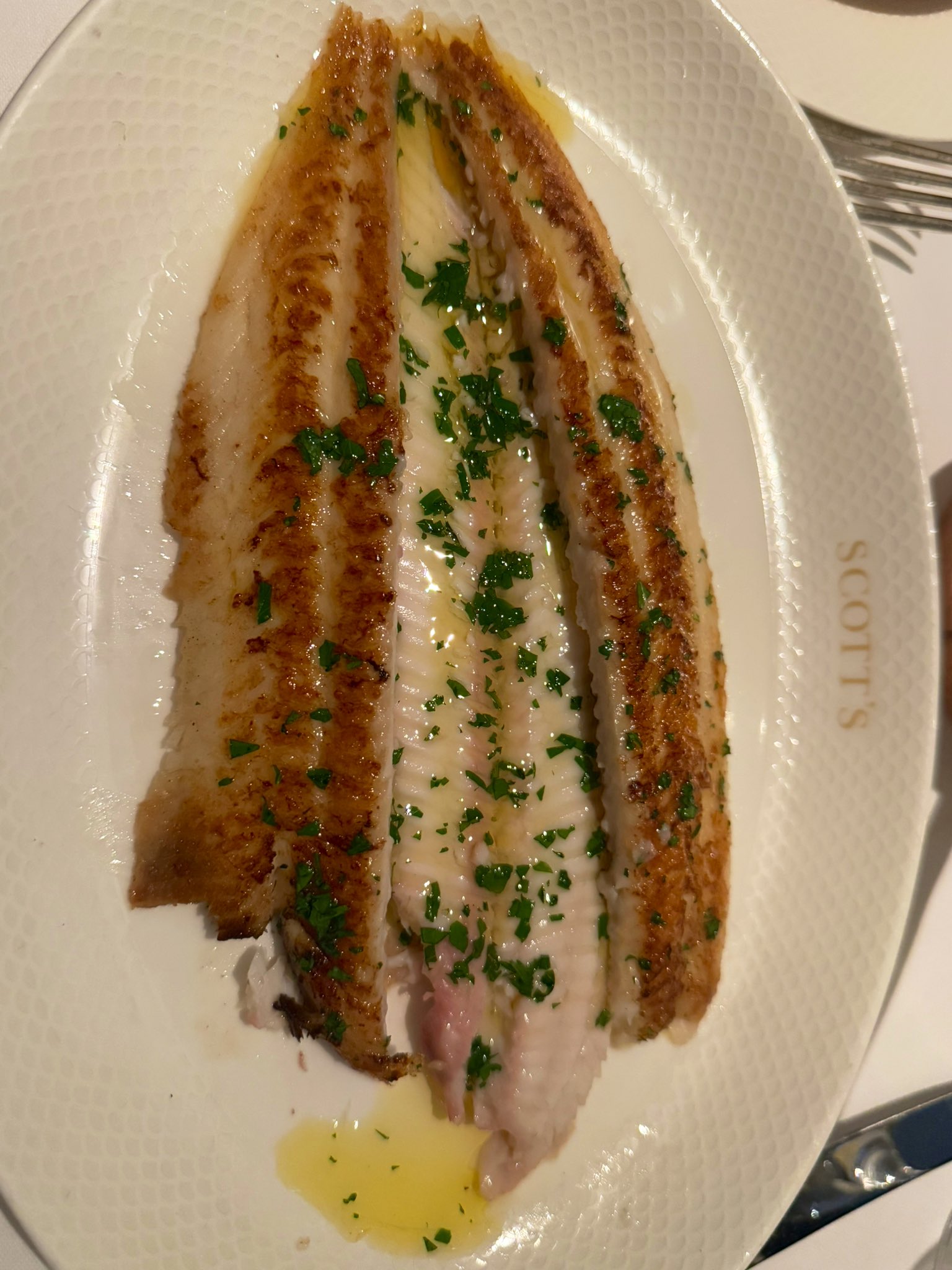



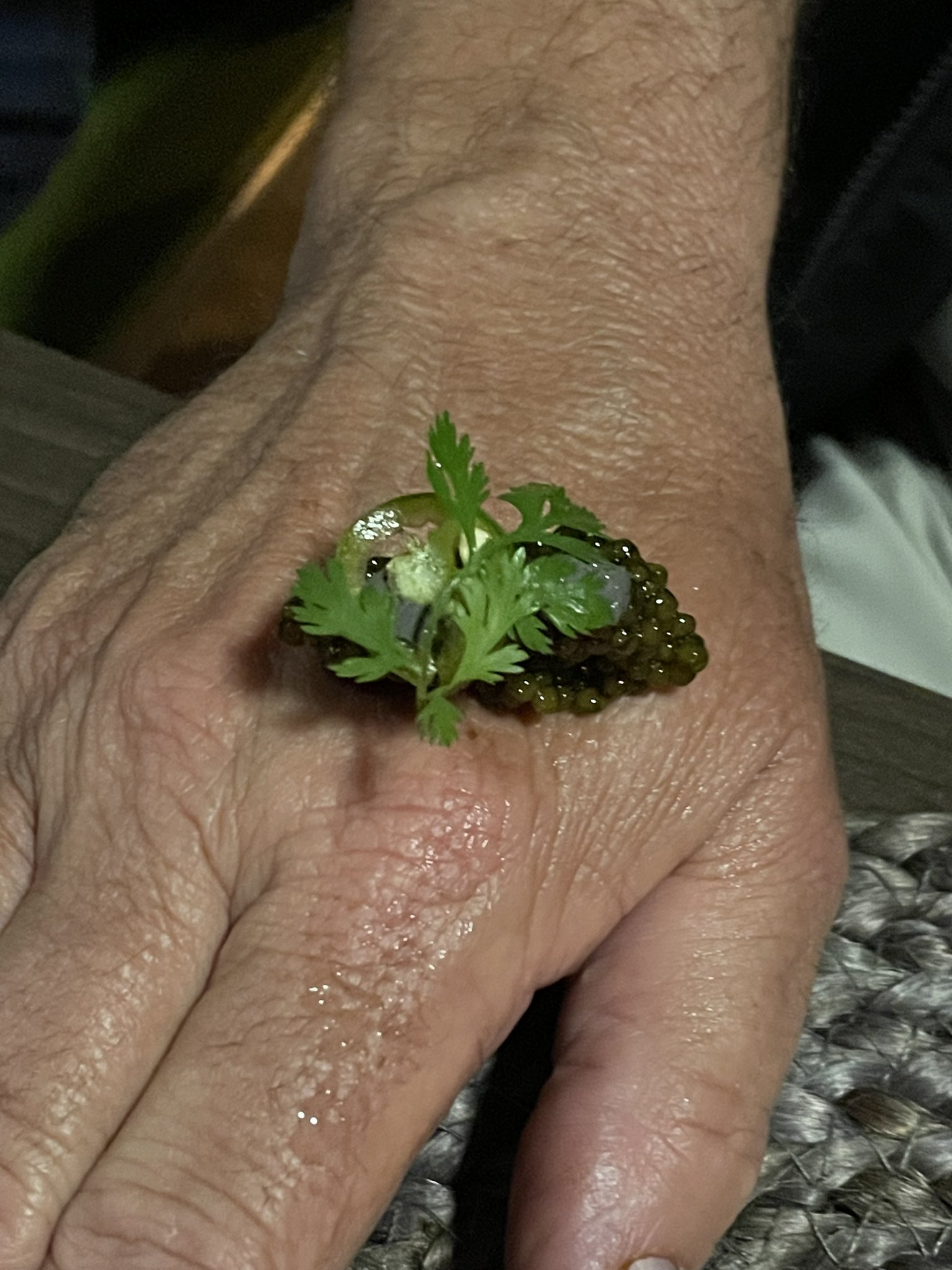 (I sentence thee to death roe)
(I sentence thee to death roe)

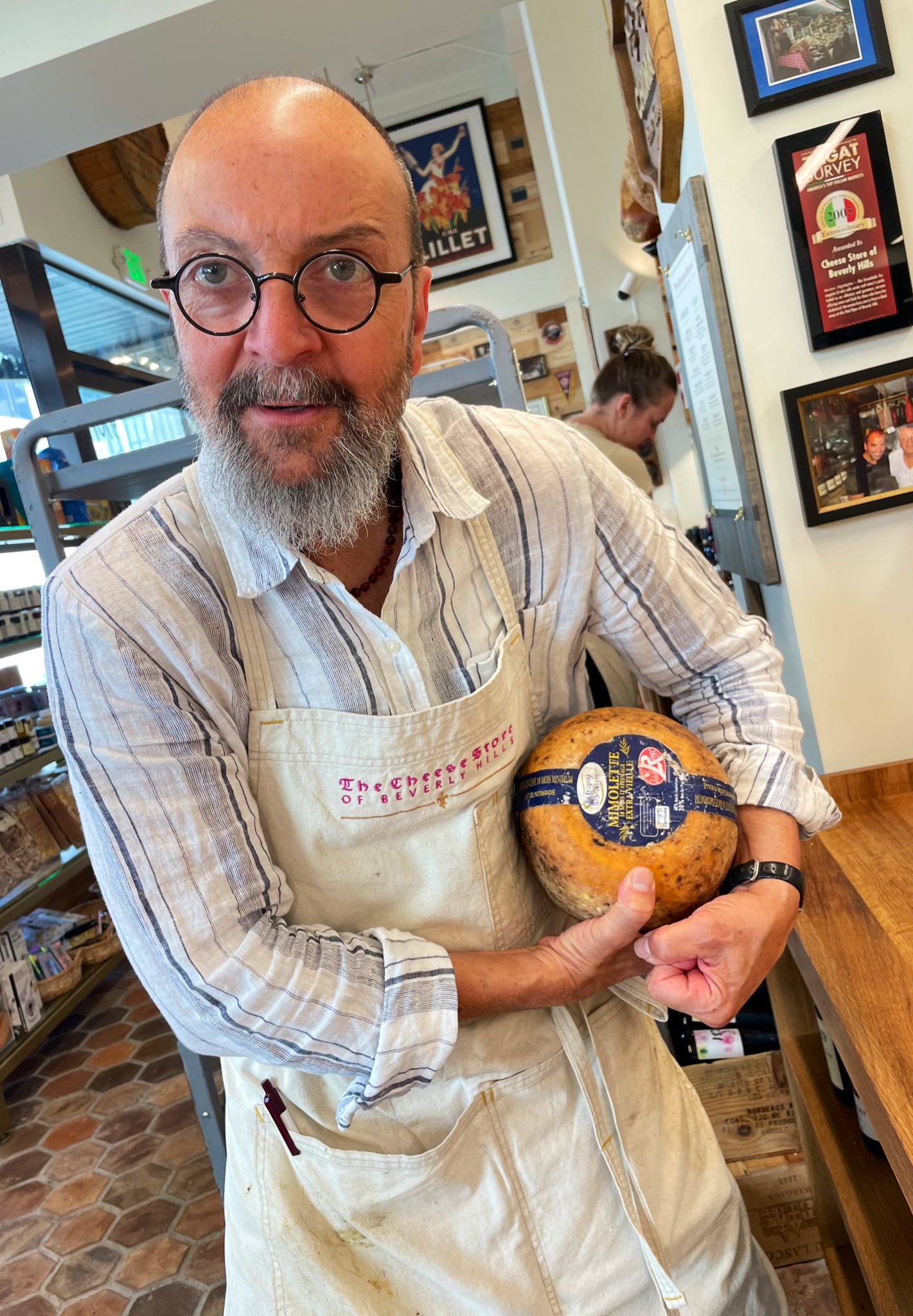 (Norbert knows Mimolette)
(Norbert knows Mimolette)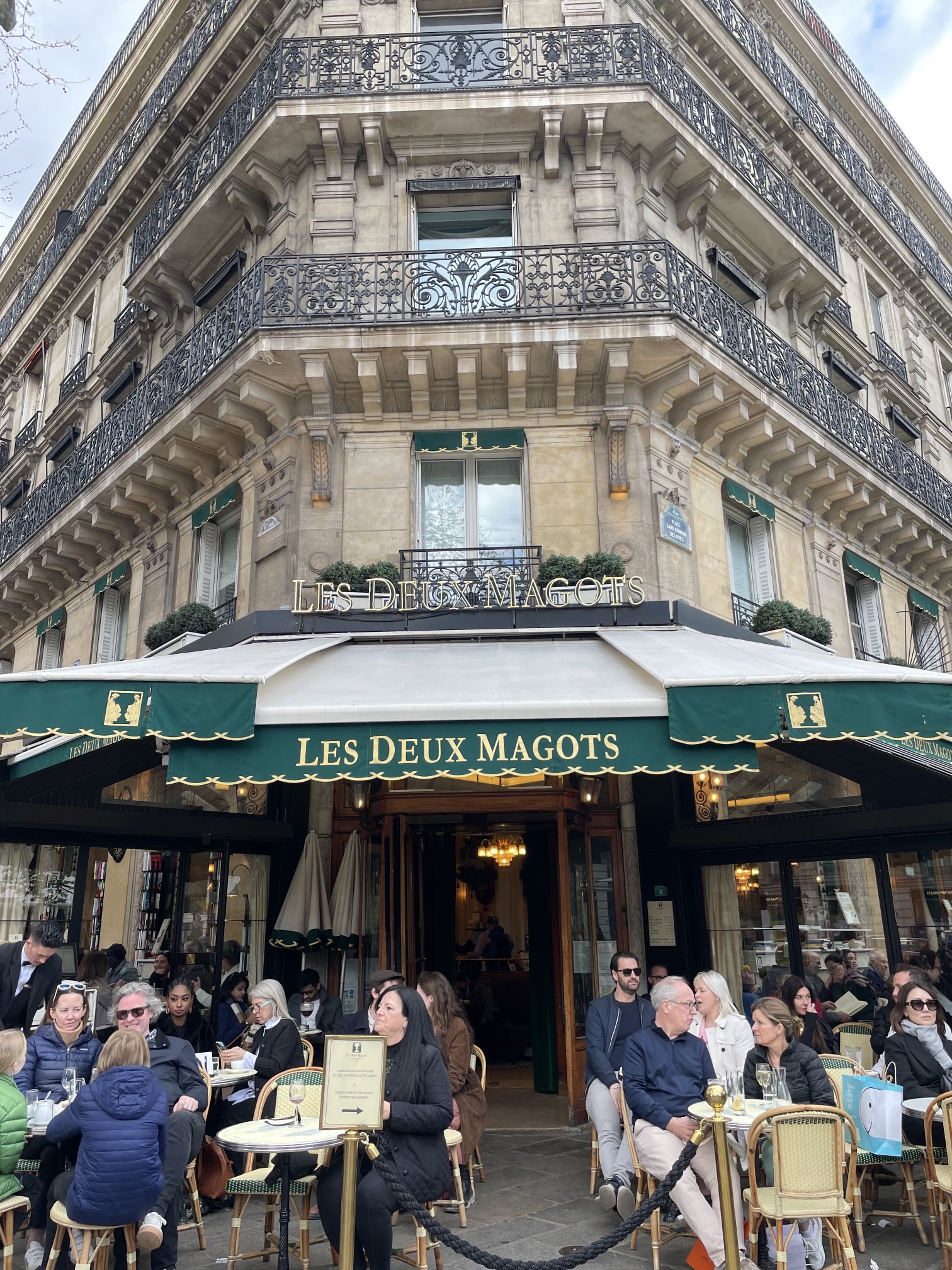

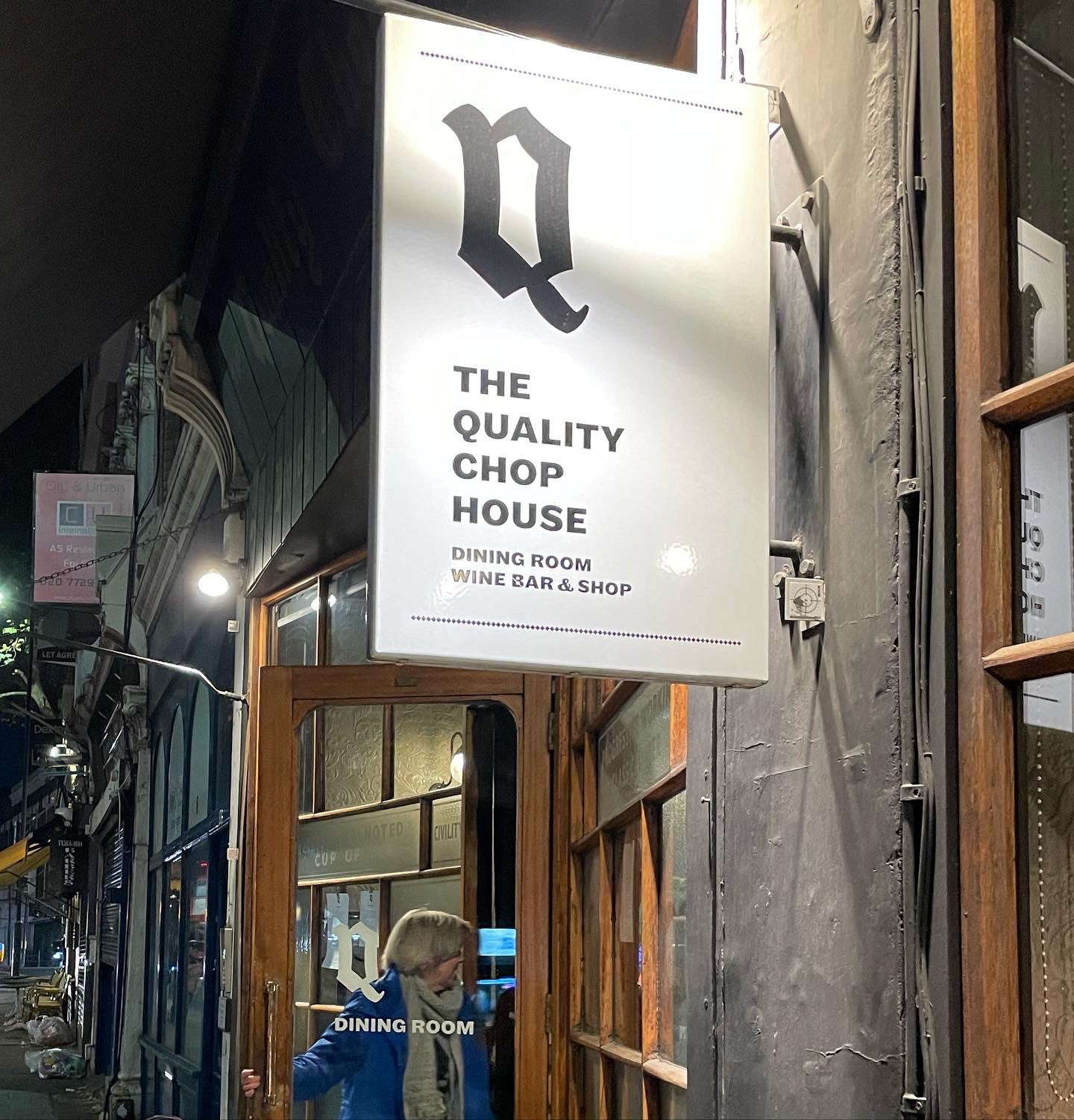
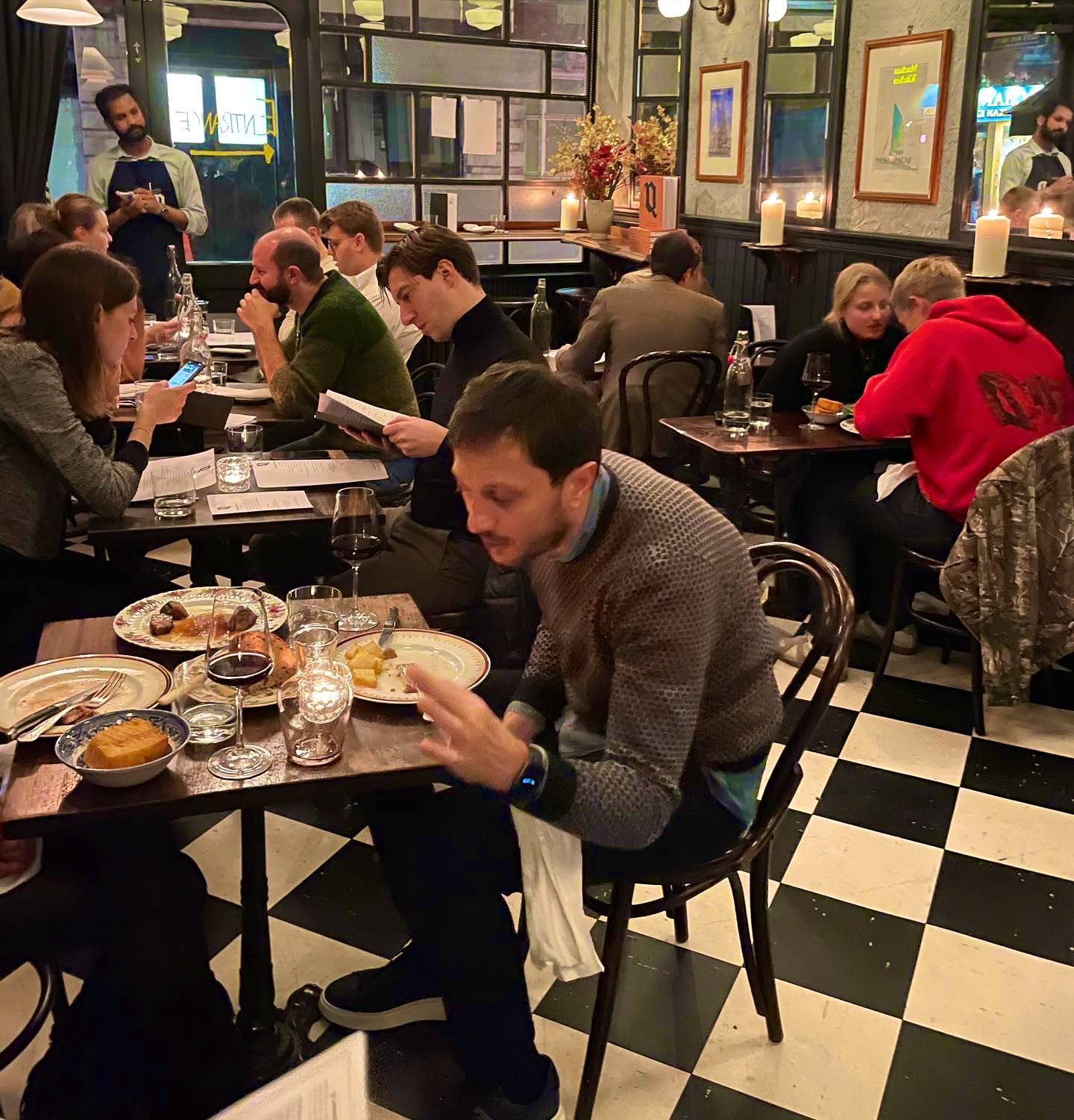 (Tiny tables, quality cooking)
(Tiny tables, quality cooking)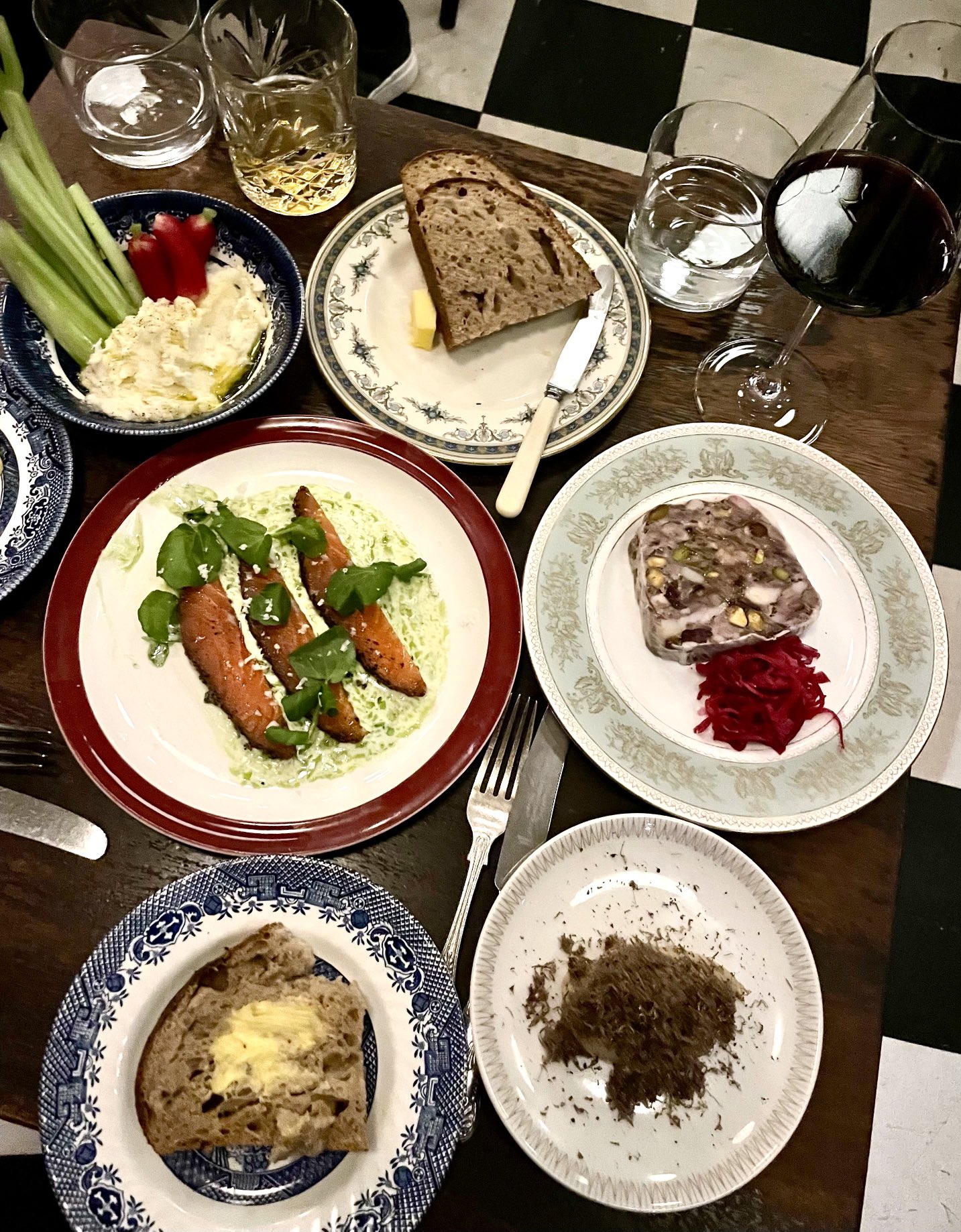 (Small table, big flavors)
(Small table, big flavors)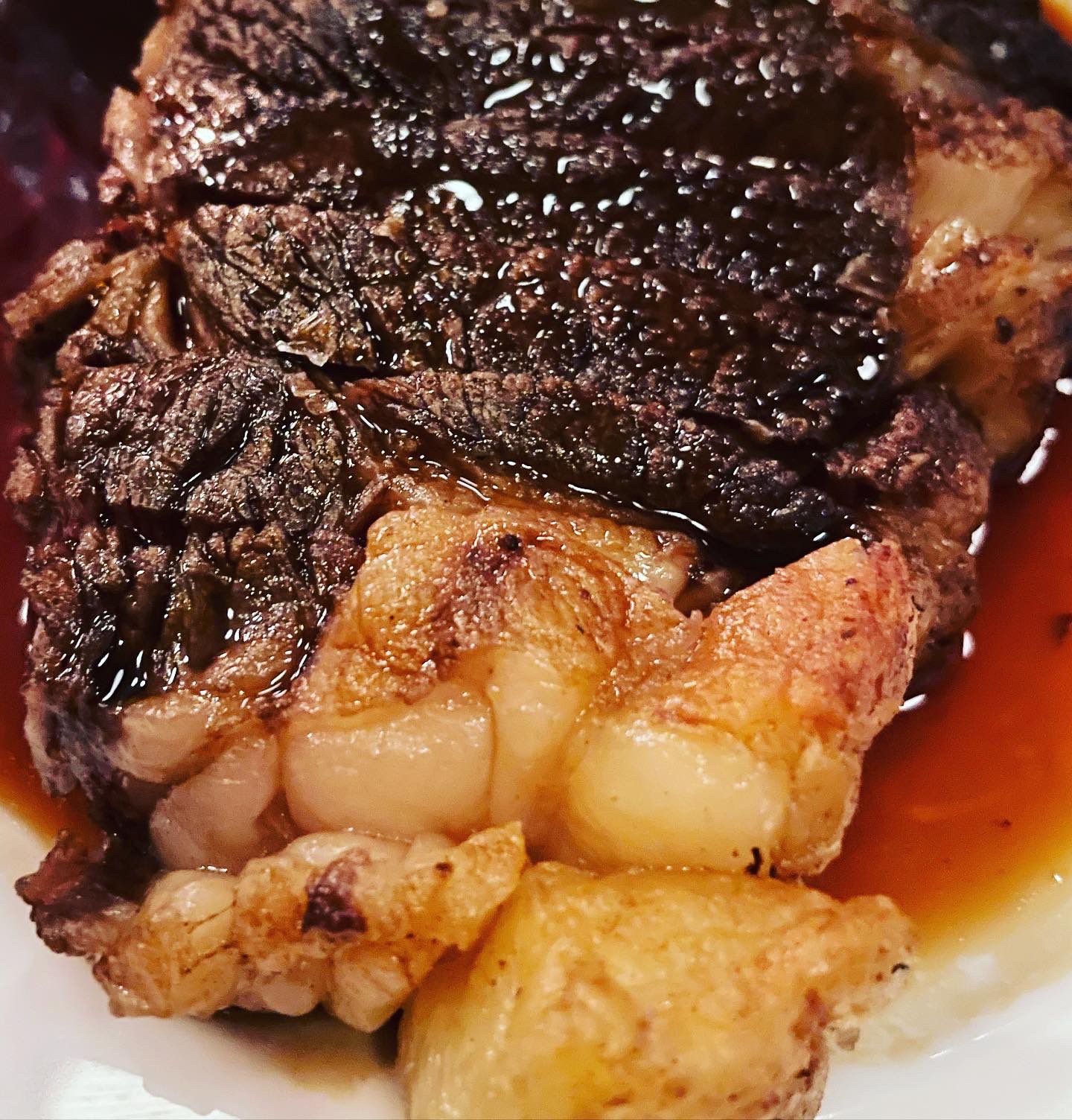 (British beef)
(British beef)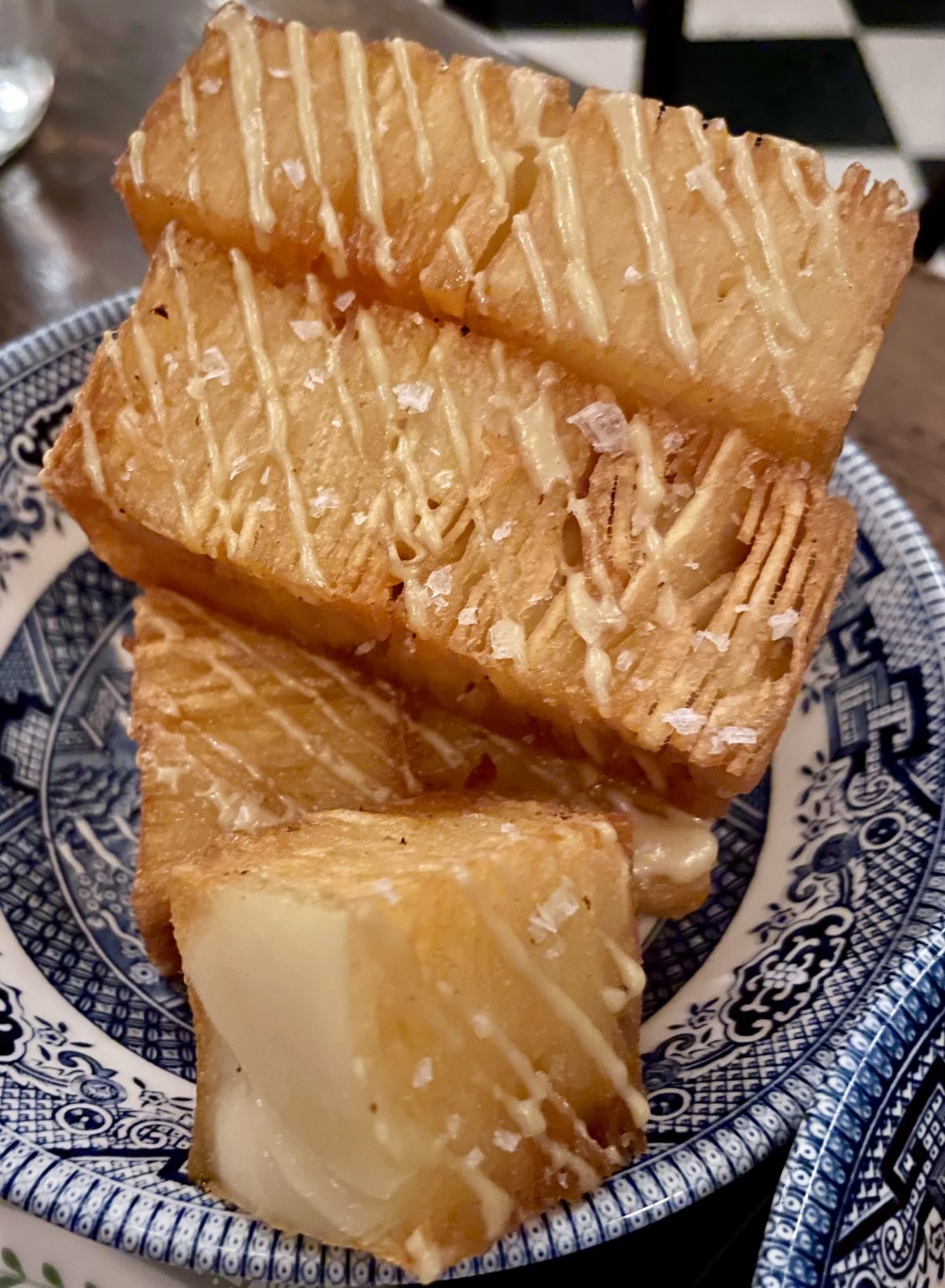 (British spuds, French technique)
(British spuds, French technique)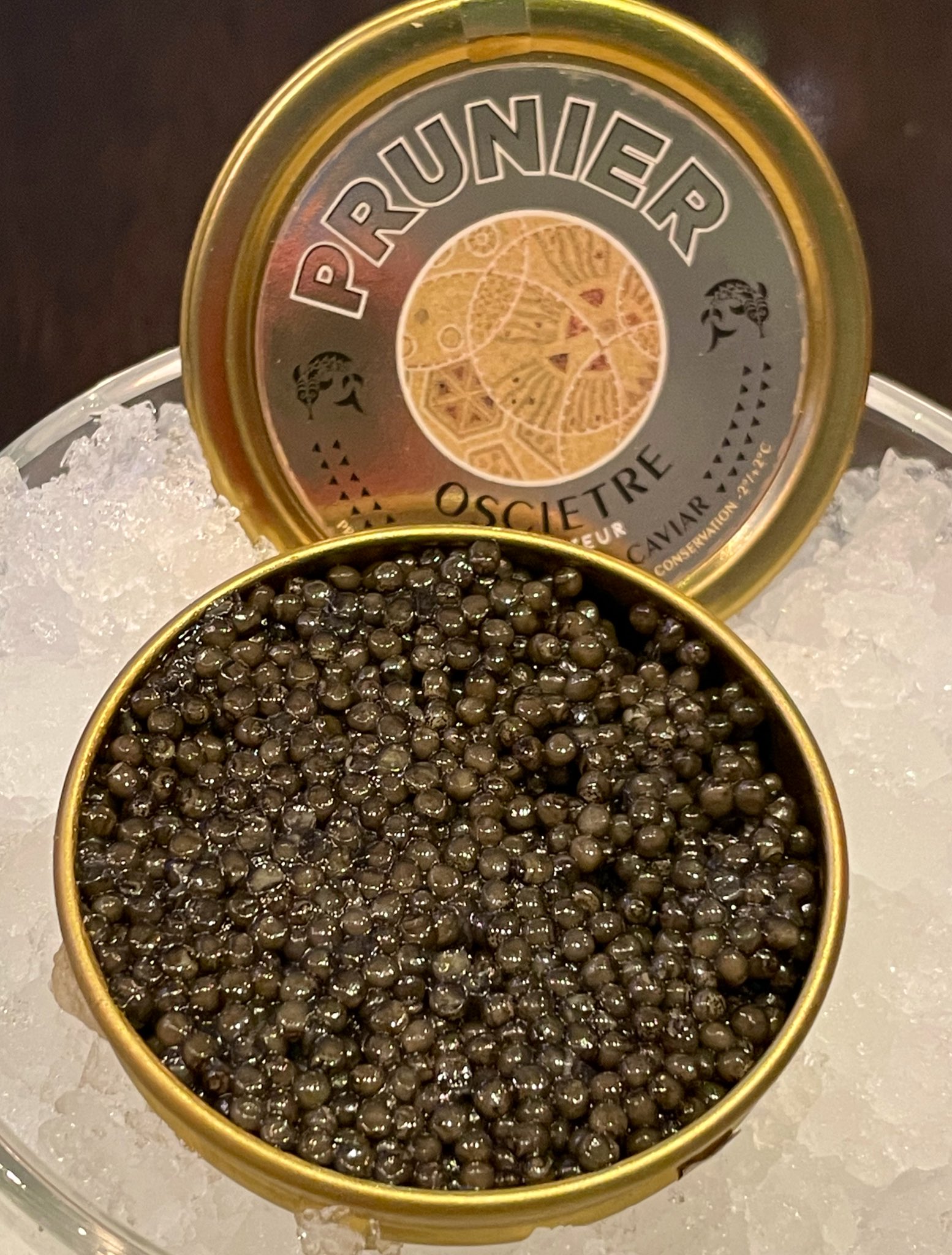 (Tastes like hazelnuts, not salty, stale fish)
(Tastes like hazelnuts, not salty, stale fish)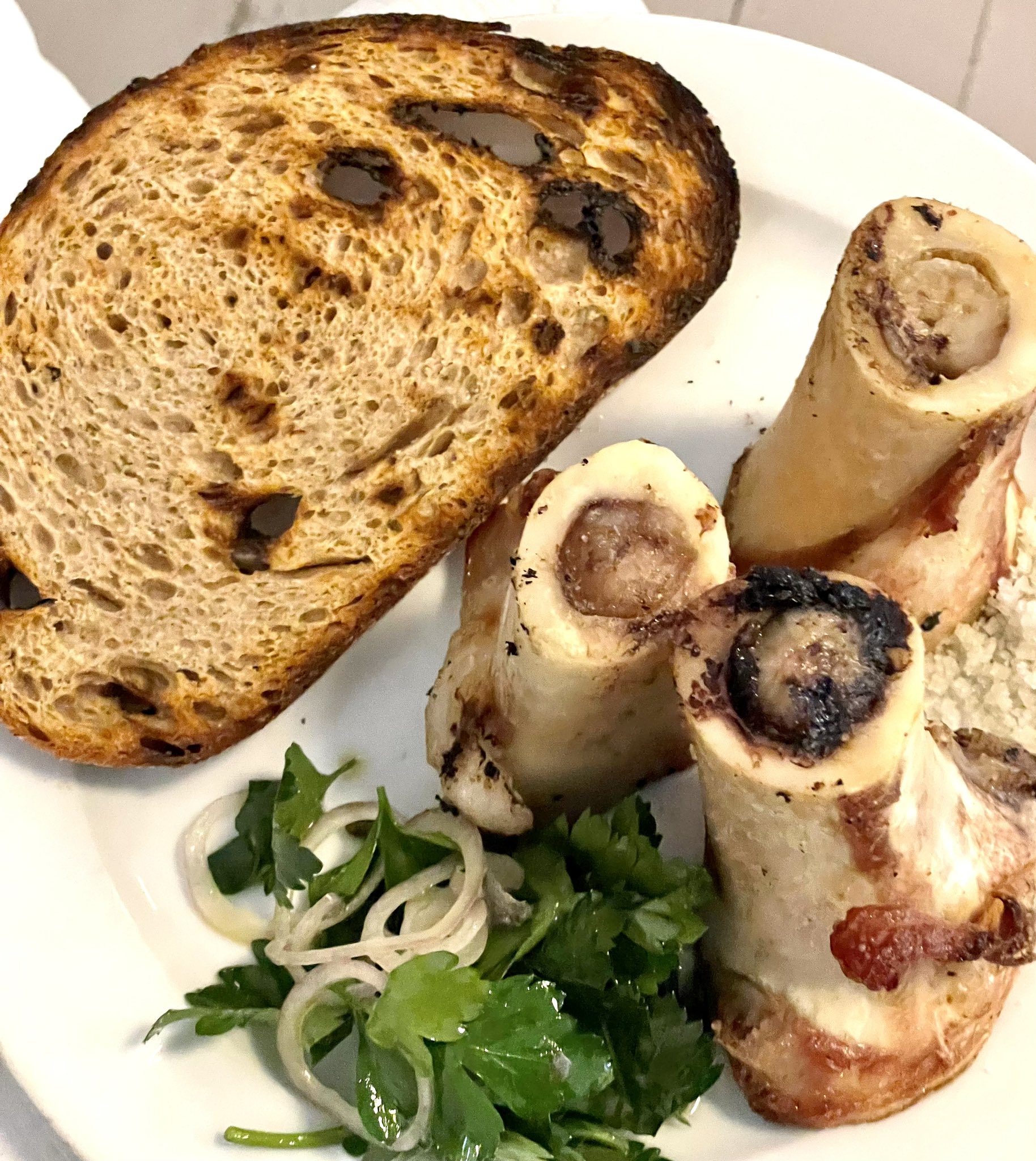
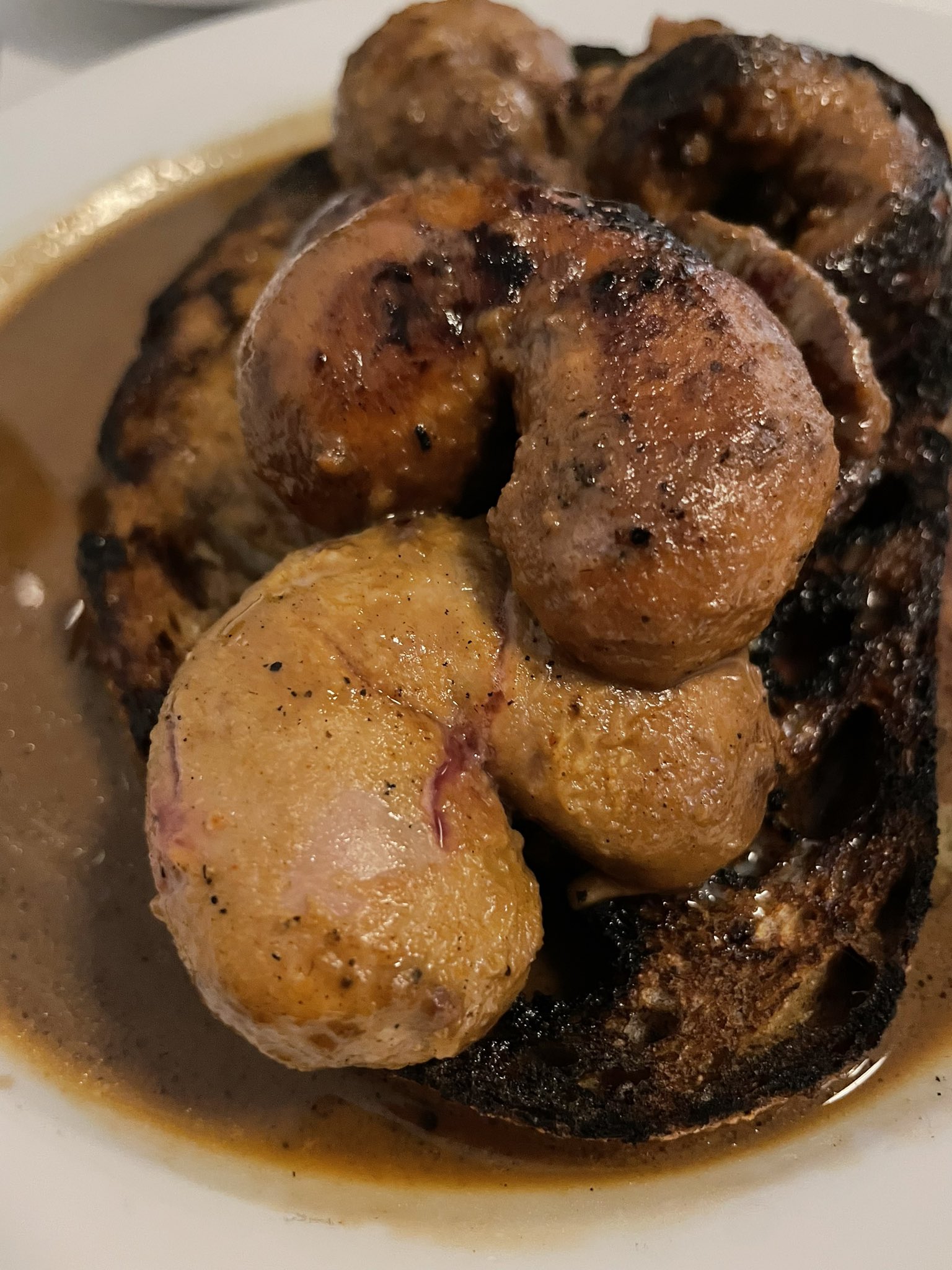 (Quite the pisser, these bad boys were)
(Quite the pisser, these bad boys were)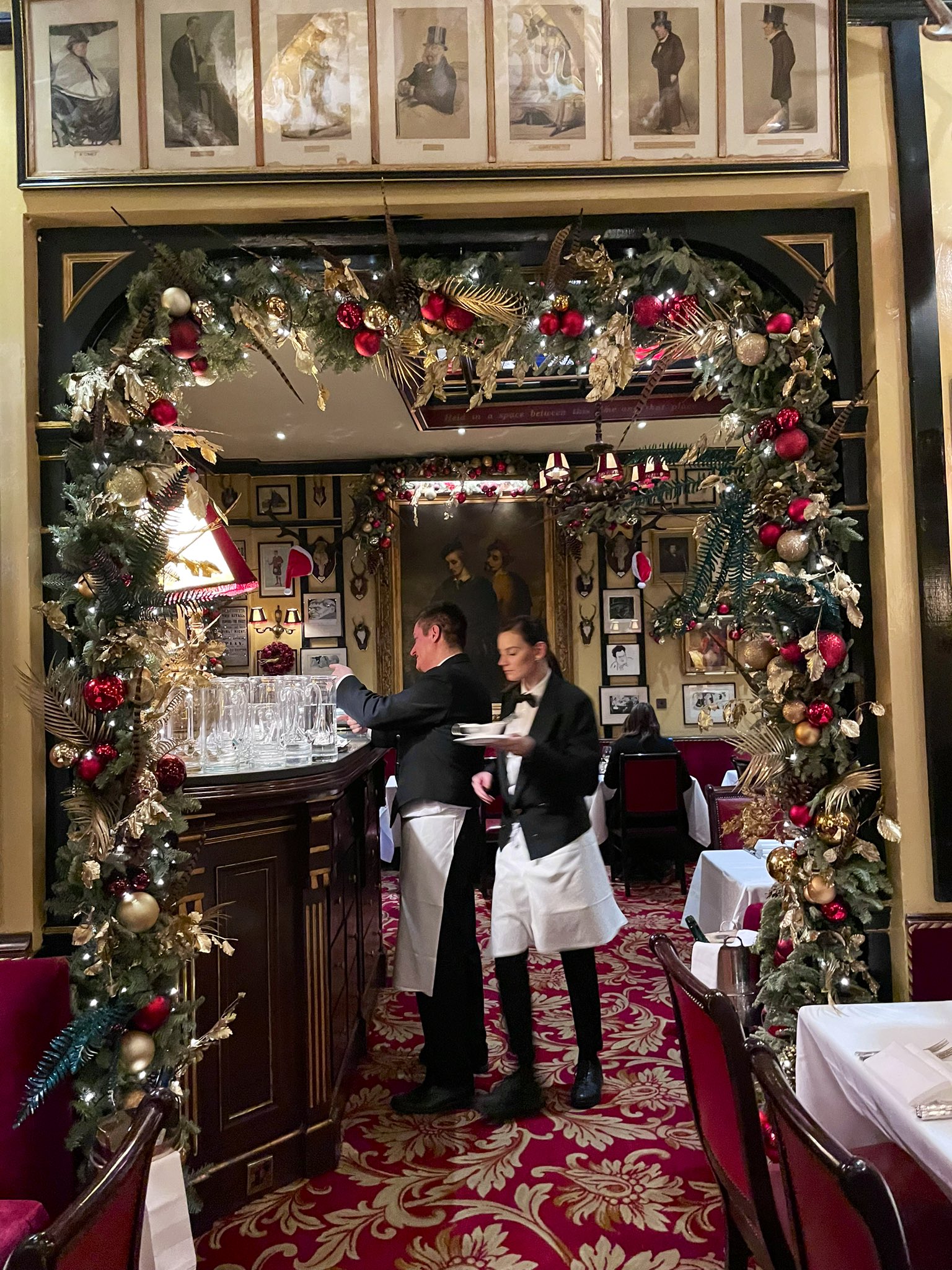 (No humbuggery here)
(No humbuggery here)